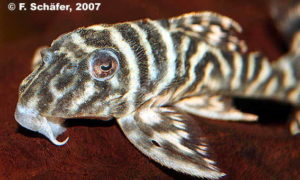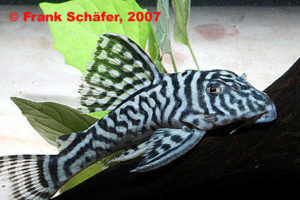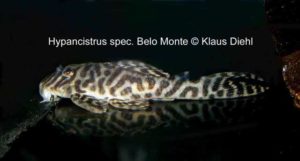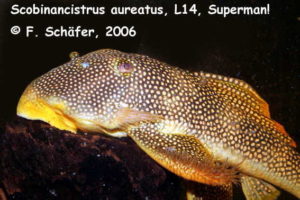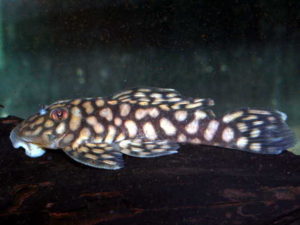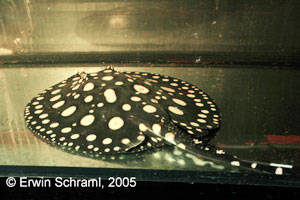The beautiful L82 originates from the lower Rio Xingu in Brazil (around Altamira). The species is very variable in terms of spot size and shape. Wild-caught specimens also often have a yellowish-orange spot coloration or shiny green-blue spots (“Opal-Pleco”). A few days ago (on October 30, 2023), the species, which received its L-number back in […]
Search Results for: xingu
-
-
Squaliforma cf. emarginata L11
Among the loricariid catfishes that are known by scientists for a very long time already is this species. It has been described initially 1840 under the name of Hypostomus emarginatus. Since then it has been placed in different genera, in 2001 in Squaliforma and in 2016 in Aphanotorulus, when Squaliforma has been considered to be […]
-
Baryancistrus xanthellus L81c Sao Felix
The great hype surrounding L catfish has long since given way to normal handling of these beautiful and interesting fish. One of the enduringly popular species is Baryancistrus xanthellus, which entered the hobby under L numbers L18, L81 and L177. The species is common and frequent in the Rio Xingu and its tributaries. Nevertheless, it […]
-
The Crenicichla have been reclassified
With 93 accepted species, the pike cichlids (Crenicichla) are the most species-rich genus of cichlids anywhere. Closely related to Crenicichla are the Teleocichla cichlids. The relationship is so close that the independence of Teleocichla has been doubted several times. In a recent study in which 74 species of the complex could be considered (65 Crenicichla […]
-
Batrochoglanis villosus
From the Rio Xingu in Brazil we have received frog catfishes, which are assigned to the species Batrochoglanis villosus. Batrochoglanis was previously placed with Pseudopimelodus. More recent work has divided the frog catfishes into a whole series of genera, which makes it difficult to see through, especially since many species from different genera look darn […]
-
Leporellus vittatus
Finally we were once more able to import some of the very rarely offered Leporellus vittatus from the Rio Xingu in Brazil. This extraordinary species attains a length of approximately 25 cm and belongs to the headstander tetra relationship. However, in Leporellus the air bladder is mostly reduced and so the fish live strictly bottom […]
-
Parancistrus sp. Rio Araguaia L56n / LDA46
The genus Parancistrus includes only two scientifically accepted species, the Golden Parancistrus (P. aurantiacus), which was erroneously also assigned L-number 56 (this is incorrect) and P. nudiventris, which was assigned L-numbers 31 and 176; this is a black catfish with very fine white spots. In addition, we know L258 from Rio Iriri, a black catfish […]
-
Hypomasticus julii
In 1996, ichthyologists Santos, Jegu, and Lima described an unusual Leporinus from the Rio Xingu and Trombetas as L. julii. The new species is closely related to L. pachycheilus, an extremely color variable Leporinus species. Unique to L. julii, which was named in honor of Júlio Garavello, is the completely underslung mouth and teeth position. […]
-
Thayeria obliqua
Unfortunately the beautiful penguin tetra, Thayeria obliqua, from the upper Amazon is offered only very rarely, in contrast to its cousin T. boehlkei, which can always be found in the trade. In the trade are only offsprings of T. boehlkei; it originates from the Rio Xingu drainage in Brazil. A third species, T. ifati from […]
-
L129 var Hypancistrus debilittera
The small remaining, nicely marked Hypancistrus debilittera from the Rio Bita (a tributary to the Rio Meta, Colombia, Orinoco drainage) enjoys a great popularity since years. Already with 7 cm length the males become sexually active, the maximum length is given with about 12 cm. We import this species regularly. Recently we received a “Hypancistrus […]
-
Pseudacanthicus sp. L185 Bred
The cactus plecos (Pseudacanthicus) are popular with owners of large aquariums. L185 originates from the Rio Xingu and is also called Belo Monte Cactus Pleco, because this catfish used to be caught there. We do not know if the species still exists there, or if it was wiped out by the construction of the Belo […]
-
Sartor respectus
From the Rio Xingu we could import the probably strangest of all headstander: Sartor respectus. Unfortunately there were only two specimens, which one of our employees acquired. Nevertheless we did not want to withhold this speciality from you, dear readers. Sartor (there are two other very similar species, one from the Rio Trombetas (S. elongatus) […]
-
Spectracanthicus (= Oligancistrus) zuanoni L 354
Spectracanthicus zuanoni L 354 originates from Rio Xingu and the Rio Iriri in Brazil. It has been described scientifically only in 2014 (see http://www.aquariumglaser.de/en/archiv.php?news_id=1195). The fish belongs to the same species as L 20, with however clearly larger white marks, so that the design reminds of a black net on a bright background. The reddish, […]
-
Curculionichthys sabaji
A very long name for a very small fish! The genus Curculionichthys was established only in 2015 to accommodate dwarf sucker catfishes of the subfamily Hypoptopomatinae (formerly: Otothyrinae) of Loricariidae, which were previously placed in the genus Hisonotus. Both anatomical and molecular data showed that two independent evolutionary lineages existed within Hisonotus, namely that around […]
-
Ancistrini sp. L82
Among the species threatened by the construction of the Bela Monte Dam is L82, a species of loricariid up to about 15 cm long, which cannot yet be assigned to any genus described scientifically to date; it is most similar to Scobinancistrus. Also on species level L82 is not yet worked on. The only certainty […]
-
Mylesinus paucisquamatus
A few weeks ago we introduced you to a new pacu, which we received as Tometes kranponhah. At that time we thought the animals originated from the Rio Xingu. (see https://www.aquariumglaser.de/en/fish-archives/tometes-kranponhah-2/) In the meantime, further correspondence with our supplier revealed that the animals did indeed come from the Rio Tocantins. We have received another shipment […]
-
Acanthicus sp. L155 Furo Maguari
Acanthicus hystrix is one of the great myths in the literal sense. With a length of almost one meter it is one of the largest loricariid catfishes at all. In addition, the species, which was already described in 1829, is extremely prickly: “hystrix” means “porcupine”! Unfortunately, the specimen on which the description of this species […]
-
Crenicichla from the Rio Xingu
In the 1990s, when the large river cichlids of Brazil experienced a certain boom, also four Crenicichla species came to Europe for the first time, which were named Crenicichla sp. Xingu I – IV due to the lack of availability of a scientific name. All four grow quite large by ornamental fish standards, you have […]
-
Aphanotorulus sp. L11
The correct name of this beautiful catfish from the Rio Xingu is a matter of dispute among experts. In many parts of South America similar looking catfishes can be found, which are all close to the species already described in 1840 as Hypostomus emarginatus. These were assigned to the genus Squaliforma in 2001, and to […]
-
Which Semaprochilodus comes from Indonesia?
Quite clearly – none at all! Because this genus is exclusively from South America. But in Indonesia these beautiful large tetras are bred and occasionally we import juveniles from there. Then one wonders which species it is. We get them as S. insignis and so we sell them on, but is the determination correct? This […]
-
Tometes kranponhah
In the meantime it has turned out that these animals are Mylesinus paucisquamatus from the Rio Tocantins and the statement that they came from the Rio Xingu was a mistake. New species of large fish are still being found in the rivers of South America, despite they have been well studied. This is mainly due […]
-
Hypancistrus sp. “Nhamunda” L475
The Hypancistrus catfishes with striped pattern are on the one hand a wonderful enrichment for the aquaristics, because they look beautiful, don’t grow too big and can be bred quite well, on the other hand they are constant cause for quarrel. Because in many cases it is hardly possible to determine them exactly. This is […]
-
Ancistrus macrophthalmus LDA74
From time to time we receive a very flat-bodied Ancistrus from the Orinoco drainage in Colombia and Venezuela under the name of A. ranunculus/L 34. However, this species does not exist there, A. ranunculus is only known from the Amazon tributaries Xingu and Tocantins/Araguaia; the Orinoco species is Ancistrus macrophthalmus, which has received the LDA […]
-
Hyphessobrycon heterorhabdus
Already in 1894 the three-banded flag tetra (Hyphessobrycon heterorhabdus) was described scientifically; the animals on which the description was based came from the Brazilian state of Pará, more detailed information or illustrations are not available. From 1910 and in the 1920s, when the tetras advanced to the most popular aquarium fishes, also three-banded tetras came […]
-
Parancistrus nudiventris, L31, LDA4, Peppermint Pleco
This pleco from the Rio Xingu is an old friend, however, it received a scientific name only in 2005. It received the L-number 31 already in 1989. The genus Parancistrus is closely related to the genus Spectracanthicus; the formerly often used genus Oligancistrus is invalid and declared synonymous with Spectracanthicus. The only difference between Parancistrus […]
-
Baryancistrus xanthellus L18, L81, L81n, L177
About from the end of May to the end of September the season of the beautiful Golden Nuggets of the genus Baryancistrus lasts. Although the fish are considered to be extremely common in nature, are also found in shallow water and have been used as food fish since time immemorial, they were only scientifically described […]
-
Krobia xinguensis
Only in 2012 this pretty cichlid was scientifically described, before that it was known in the hobby as Krobia sp. “Xingu Red Head”. As the name suggests, the animal originally comes from the Rio Xingu in Brazil. However, the species is only available as bred ones. This beautiful Aequidens relative is the ideal cichlid for […]
-
Balroglanis schultzi (formerly Centromochlus s.)
The driftwood catfishes enjoy an increasing popularity, since it succeeds regularly to reproduce them. All species have – as far as known – an internal fertilization, the females spawn later without the presence of a male. Most driftwood catfishes are active at night or twilight. Many species are known to hunt land insects that have […]
-
L330 scientifically described: Panaque nigrolineatus laurafabianae
Many fish scientists (ichthyologists) currently reject the concept of the subspecies. They argue that either there are definable characteristics, in which case it is a species, or there are no characteristics, in which case the form cannot be named. However, this concept has only limited relevance to reality; in the case of the large striped […]
-
Moenkhausia celibela
For over 150 years a small tetra is known in science, that is placed due to the scaltion of the tail fin at present into the genus Moenkhausia, under the name M. lepidura. The species differs from all other Moenkhausia species, it was thought, by the coloration of the tail fin, in the upper half […]
-
Hoplias curupira
Right now we have three Hoplias species from Venezuela in our stock. Hoplias curupira belongs to the real rarities and is accordingly sought after among predatory fish fans. With a final length of about 40 cm the stocky species remains relatively small. It belongs within the genus Hoplias to the so-called H.-lacerdae group, which besides […]
-
Synaptolaemus latofasciatus
Finally we managed to import again some specimens of this unusual “striped sock” from Venezuela. The species – there is just the one in the genus Synaptolaemus – was long known under the name S. cingulatus, until Britzki et al. discovered that the species described as Leporinus latofasciatus by Steindachner in 1910 was identical with […]
-
Krobia xinguensis
This pretty cichlid has been described scientifically only in 2012. Up to that time it was known among hobbyists under the name of Krobia sp. “Xingu Red Head”. This nice relative of Aequidens is the ideal cichlid species for beginners, because it is one of the most peaceful species of cichlid at all. Besides this […]
-
Serrasalmus manueli
This piranha, described from Venezuela, is easily recognizable by its characteristic pattern in connection with the head profile, but still causes great confusion, as the fish in the trade come from completely different areas and are still indistinguishable. S. manueli was described as Pygocentrus manueli from the Río Paraguaza, middle Orinoco, Venezuela. The first description […]
-
Moenkhausia heikoi
For the first time we could import, even if only in very limited numbers, this tetra from the Rio Xingu described only in 2004. The animal became known in 2001, when Rainer Stawikowski presented the fish as “Hemigrammus sp. Xingu” in the journal DATZ. The scientific description took place in 2004, twice and almost simultaneously: […]
-
Squaliforma cf. emarginata L11
Among the loricariid catfishes that are known by scientists for a very long time already is this species. It has been described initially 1840 under the name of Hypostomus emarginatus. Since then it has been placed in different genera, in 2001 in Squaliforma and in 2016 in Aphanotorulus, when Squaliforma has been considered to be […]
-
Rhynchodoras woodsi
Only very rarely members of the enigmatic genus Rhynchodoras (family Doradidae) appear in the ornamental fish trade. It is believed that these fish live in the very riverbed where collectors of ornamental fishes usually do not fish at all. All species of Rhynchodoras have a strange appendix on the jaw that looks like a share; […]
-
Copella arnoldi
The Splashing tetra (Copella arnoldi) is very famous due to it´s unique way of spawning. The pair jumps out of the water and deposites the eggs on the underside of plant leafes hanging over the water surface (in the aquarium they often spawn on the top glass). After spawning the male guards the clutch and […]
-
Teleocichla centrarchus
Teleocichla are small cichlids from Brazil. They love comparatively strong current. The genus is a close relative of the pike cichlids (Crenicichla). The genus teleocichla has been discovered only late, in 1988; currently 18 different species are known, 10 of them are still undescribed scientifically. Genus type is T. centrachus; we can offer now once […]
-
Teleocichla centrarchus
Teleocichla centrachus from Rio Xingu probably is the most imported Teleocichla. In addition, it is the type species of this kind. As the males have a maximum length of approx. 10cm, you can certainly still call them dwarf cichlids. The females, being mostly only 8cm maximum, are a little smaller and rather soon show a […]
-
Pterophyllum scalare WILD Rio Xingu
We received very nice wild collected angels from the Rio Xingu in Brazil. The animals are “real” P. scalare with pointed snouts. They will most probably grow up to impressive, large fish. For our customers: the fish have code 699853 on our stocklist. Please note that we exclusively supply the wholesale trade. Available in limited […]
-
Hypancistrus sp. L66 King Tiger Pleco
The King Tiger Pleco originates from the Rio Xingu in Brazil. The species belongs to the most popular plecos in the hobby. This fish attains a length of about 15 cm. Currently we can offer very nice German bred ones (4-5 cm long), which have a pretty and strongly contrasting black-and-white-pattern. Like in all species […]
-
Potamotrygon leopoldi Black Diamond German Bred
We received extremely beautiful German bred Black Diamonds. Moreover the fish are sorted by pair! The Black Diamond is a variety of Potamotrygon leopoldi that originates from the upper Rio Xingu in Brazil. These splendid stingrays attain a maximum size of about 40-60 cm disc width. One should never forget that the poison of these […]
-
Finally available again after many years: L354
We are glad that we were able to import once more the pretty L354 from the Rio Iriri. The species has been described scientifically under the name of Spectracanthicus zuanoni in early 2014. The scientists declare them conspecific with L20 from the Rio Xingu (the Rio Iriri is an affluent of the Rio Xingu). However, […]
-
Beautiful P14/Itaituba, bred specimens
The taxonomy of the black river stingrays is very confusing. Three scientifically described species do exist: Potamotrygon henlei (described from the Rio Tocantins), P. leopoldi (described from the Rio Xingu), and P. garrapa (described from the Rio Branco). In P. henlei several varieties exist that possibly represent different, separate species. All specimens from the Rio […]
-
Apistogramma sp. Xingu / Vielfleck
We received wonderful, fully grown bred specimens of this beautiful dwarf cichlid. The species is still undescribed scientifically. For our customers: the animals have code 628744 on our stocklist. Please note that we exclusively supply the wholesale trade. Text & photos: Frank Schäfer
-
A new Cactus Cat related to L24/L25
The Cactus Cats L24 and L25 become around 25-30 cm long and are quite popular among hobbyists with spacy tanks. The fish are very colorful and scientifically still undescribed. L24 originates from the Rio Tocantins and Rio Araguaia, L25 from the Rio Xingu. The two can be best distinguished by the pattern of the head: […]
-
Scobinancistrus sp. L253
This beautiful loricariid originates from the Rio Xingu. It becomes collected upstream from Altamira. In all probability the species can attain a maximum length of about 35 cm, but there are no reliable information on that topic available. The pretty pair we have currently in stock (and which made a good job as photo model) […]
-
Apistogramma sp. Xingu (Vielfleck)
Apistogramma sp. Xingu is a Brazilian species of Apistogramma which is still undescribed scientifically. Like many Apistogramma species this fish has a number of varieties. We just received beautiful large bred specimens of the “Vielfleck”-variety (Vielfleck = many spots). For our customers: the fish have code 628744 on our stocklist. Please note that we exclusively […]
-
Leporinus sp. aff. tigrinus
This beautiful striped Leporinus originates from the Ventuari river in Venezuela. It represents possibly a still undescribed species of Leporinus; Leporinus with a similar coloration are known so far only from the Rio Tapajos and Rio Xingu in Brazil; these “haresnouts” (this is what the name Leporinus means translated) have been described in 1929 under […]
-
Discus Gold Xingu
We were able to obtain for the first time some brown discus from the Rio Xingu. The animals are very stout and healthy. Dominant individuals become yellow-golden all over the body. For our customers: the fish have code 732605 on our stocklist. Please note that we exclusively supply the wholesale trade. Text & photos: Frank […]
-
Hypancistrus sp. L236 bred
Zebra plecos from the Rio Xingu and its affluents are banned for exportation for years already. Even at the times when a legal exportation was possible, L236 from the Rio Iriri (an affluent of the Xingu) was extremely rare and only few specimens were caught per year. The specimens we currently have in stock are […]
-
A new Golden Nugget
The Golden Nuggets (L18, L81, L81n, L177) belong to the genus Baryancistrus and have been described scientifically under the name of B. xanthellus. However, it is still unclear wether all these forms belong to the very same species or if they represent close relatives, but seperate species. For the differences, please see http://www.aquariumglaser.de/en/baryancistrus-l18,-l81,-l81n,-l177_de_1072.html Now we […]
-
Baryancistrus sp. L81n
We take the opportunity of the receipt of a larger shipment of L81n and the scientific description of Baryancistrus xanthellus (L18, L81, L85, L177, see http://www.aquariumglaser.de/en/news/l18_l81_l85_l177_and_l47_described_scientifically_en/) to take a closer look on L81n, which we get from Sao Felix do Xingu, once more. As in all ancistine catfish it is also true in L81n: the […]
-
L18, L81, L85, L177, and L47 described scientifically
These plecos, which originate from the Rio Xingu and its tributary Rio Iriri belong to the most popular L-numbers. Now they have been described scientifically. L18, L81, L85, and L177 belong to the same species (although L81 has not been mentioned in the paper) and have been named Baryancistrus xanthellus, whereas L47 has been named […]
-
Apistogramma sp. Assurini
Currently we received a new Apistogramma from Brazil, a close relative of the species known as A. sp. Xingu in the hobby. Like most Apistogramma, A. sp. Xingu, which has been imported in 1988 for the first time, has developed a number of varieties. Some of them appear within one population, others seem to represent […]
-
Laetacara araguaiae
Laetacara sp. „Buckelkopf“ described scientifically. Laetacara sp. „Buckelkopf“ is known in the hobby for many years already. The somewhat unusal common name (the German word „Buckelkopf“ means „humphead“) derives from the feature developed by some very old males, but this happens rather seldom. It is a typical dwarf cichlid, the males grow to a length […]
-
A new L-catfish!
Last week we were able to import a new yellow seam pleco belonging to the genus Baryancistrus. The fish originate from Sao Felix at the Rio Xingu. They differ from all other members of the genus from there (L18, L47, L81, L85, L177) by the almost black ground colour of the body. Almost no spots […]
-
Laetacara araguaiae, Laetacara fulvipinnis
Laetacara sp. „Buckelkopf“ described scientifically Laetacara sp. „Buckelkopf“ is known in the hobby for many years already. The somewhat unusal common name (the German word „Buckelkopf“ means „humphead“) derives from the feature developed by some very old males, but this happens rather seldom. It is a typical dwarf cichlid, the males grow to a length […]
-
A fantastic lemon tetra
The lemon tetra, Hyphessobrycon pulchripinnis, belongs to the most important ornamental fishes and can be found in almost any pet shop. Like in so many other very common species no one gives a thought on them. But even the lemon tetra keeps a lot of secrets….. The origin of the lemon tetra was not known […]
-
Baryancistrus L18, L81, L81n, L177
The main collecting season of the beautiful gold seam sucker cats of the genus Baryancistrus starts around end of may and lasts until the end of september. Although these fishes are common in the wild, live in shallow waters and are traditionally used as food fish, they cannot be connected with one of the about […]
-
L 27 Pan.cf.nigrolineatus XINGU
Currently available: from the Rio Xingu we got this really beauty L-27 male. With a total length of about 40cm is this fish adult. He is definitely pubescent, which you can see on his long beard and Odontoden. The real nice black/golden contrast makes this fish very interesting!
-
Hypancistrus spec. Xingu
From lower parts of the Rio Xingu we received very high-contrasted Hypancistrus spec. Xingu. In their appearance they arrange between L 333 and fishes of the L 66 group. But they are clearly more flattened and stretched than L 333. From L 66 and their relatives (e.g. L 236) they can be distinguished by the […]
-
Hypancistrus spec. NEW
September 2006: Latterly we received this very rich contrasted male of an unknown Hypancistrus species. Certainly here exists a similarity to L 333 and also Hypancistrus spec. Xingu. It gets more and more difficult to attach single fishes to existing L numbers or to a known Hypancistrus species, because there are not enough hard criteria […]
-
Hypancistrus spec. „Belo Monte“ (L 287, L 399, L 400)
The denomination of this beautiful Hypancistrus is still disputed. It run long time under the number L 287, so it is named on our stock list. Recently it is called L 399 and/or L 400, the origin is the Rio Xingu, where it gets caught in the neighbourhood of Belo Monte. This species belongs into […]
-
Scobiancistrus aureatus L 14
December 2006: Last week received we a really impressive, male Scobiancistrus aureatus. With a length of about 30 cm it might be attained full growth. The strong spines on the gill cover (Interopercularodontodes), as well as on their pectoral fins are remarkable. As most L-catfishes from the Rio Xingu they like warmer waters, for their […]
-
Spectracanthicus (= Oligancistrus) zuanoni L 354
Spectracanthicus zuanoni L 354 originates from Rio Xingu and the Rio Iriri in Brazil. It has been described scientifically only in 2014 (see http://www.aquariumglaser.de/en/archiv.php?news_id=1195). The fish belongs to the same species as L 20, with however clearly larger white marks, so that the design reminds of a black net on a bright background. The reddish, […]
-
Potamotrygon leopoldi
The Black- or Eclipse-Ray is an endemic species from the Rio Xingu in Brazil. This is definitely one of the most beloved rays in the aquatic hobby. This ray is relatively easy to maintain. He will adapt fast to his new captive surroundings and will start eating quickly. This species can be housed very well […]





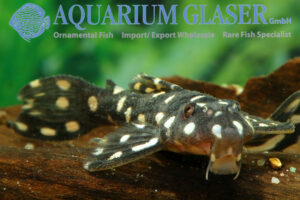
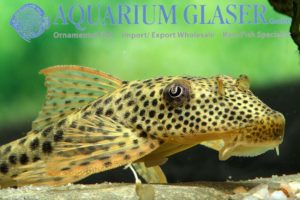
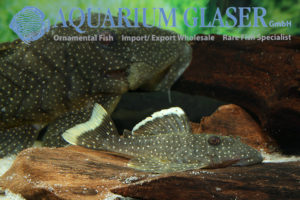
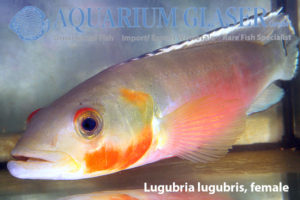
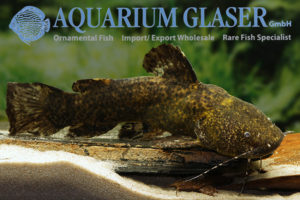
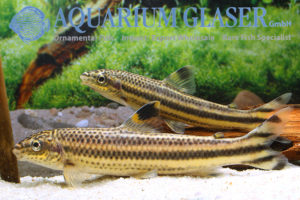
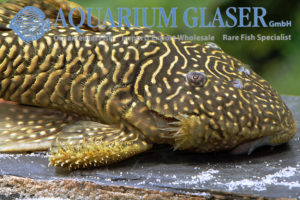
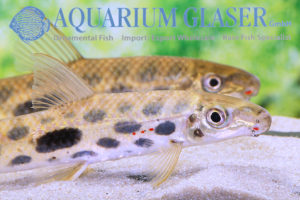
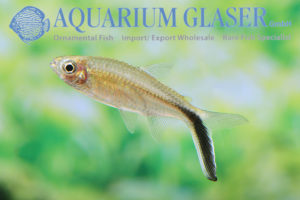
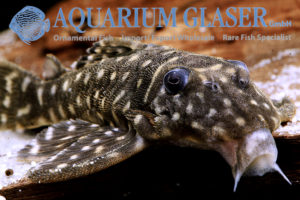
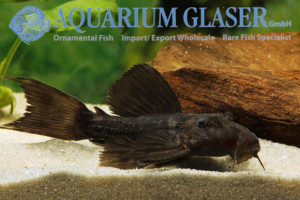
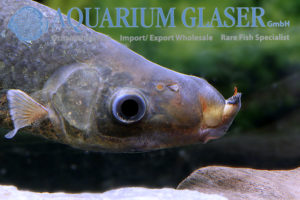
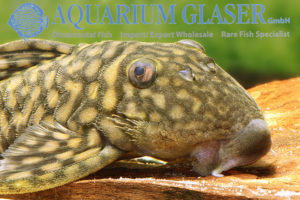
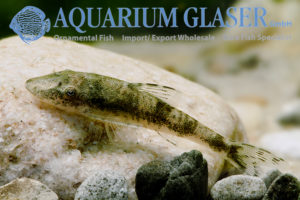
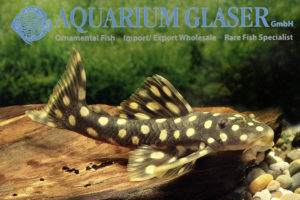
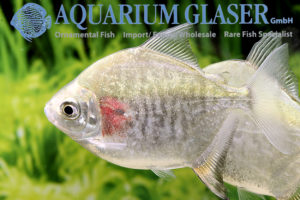
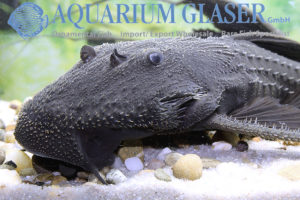
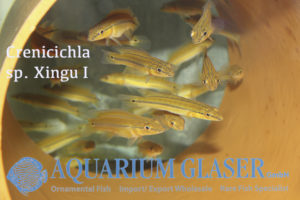
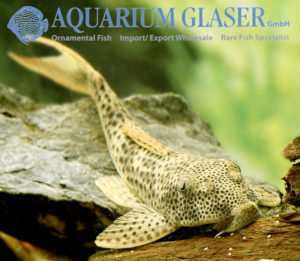
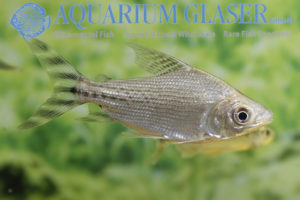
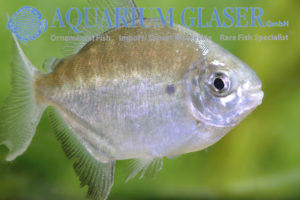
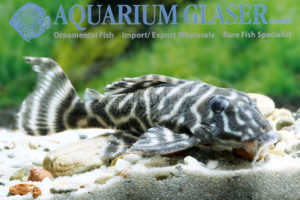
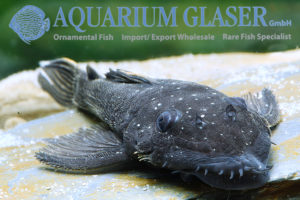
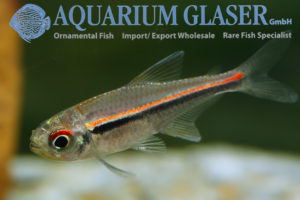
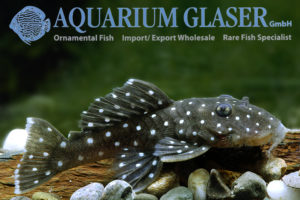
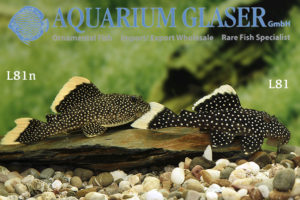
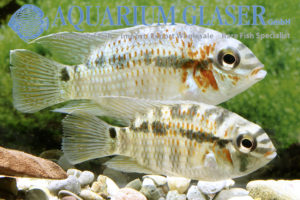
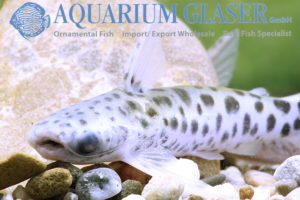
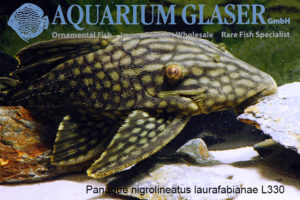
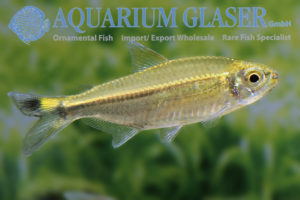
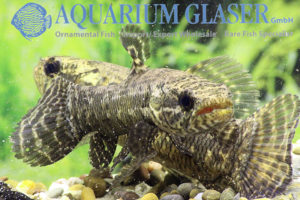
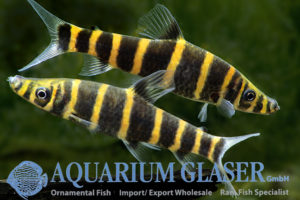
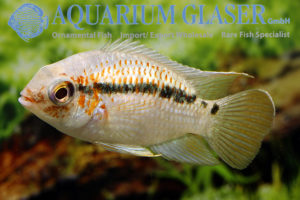
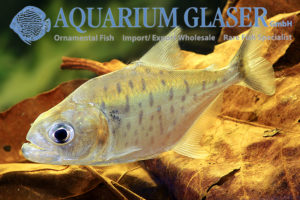
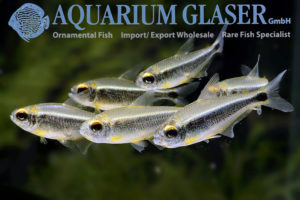
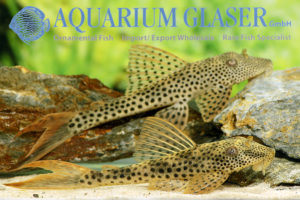
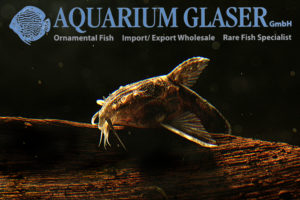
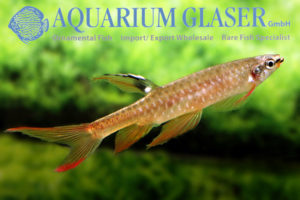
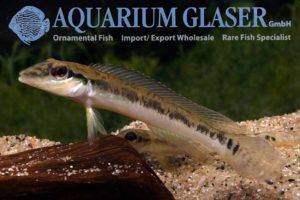
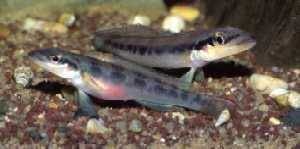
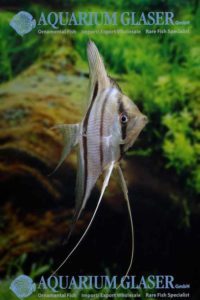
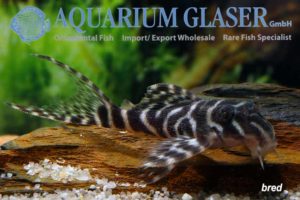
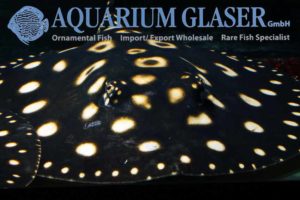
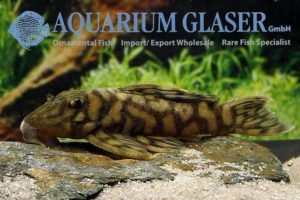
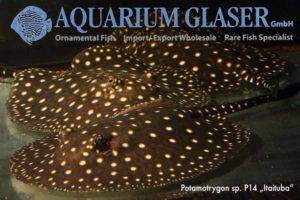
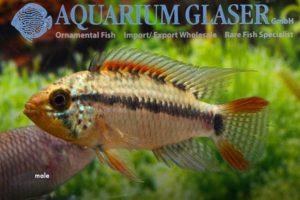
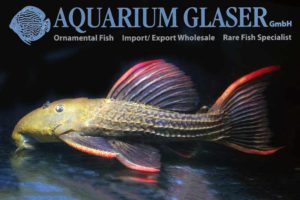
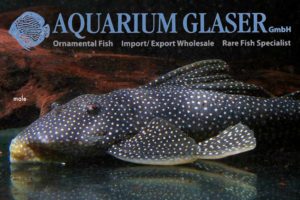
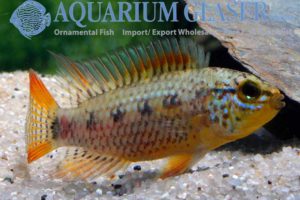
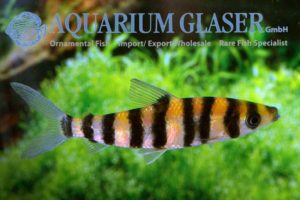
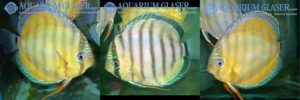
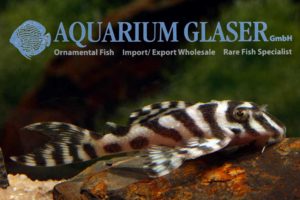
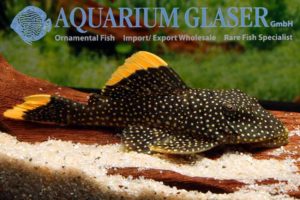
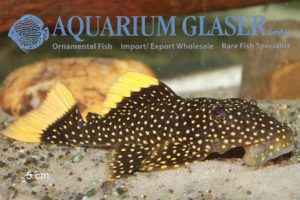
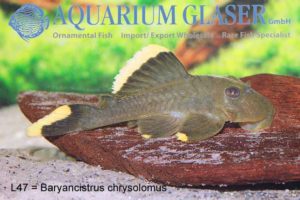
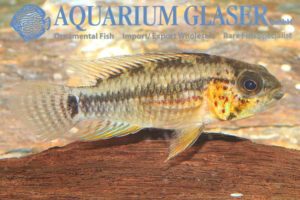
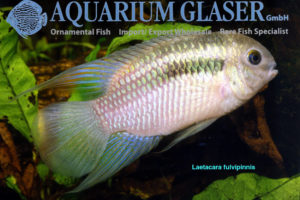
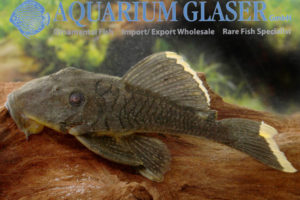
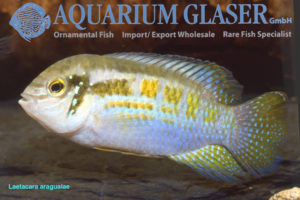
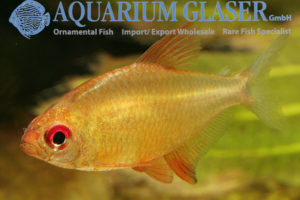
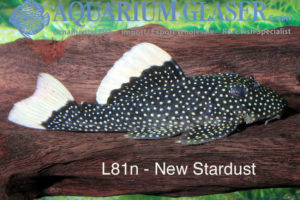
-300x225.jpg)
